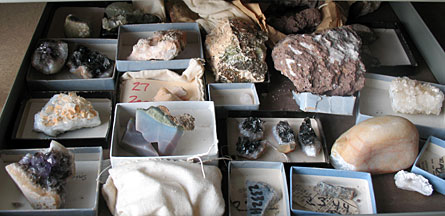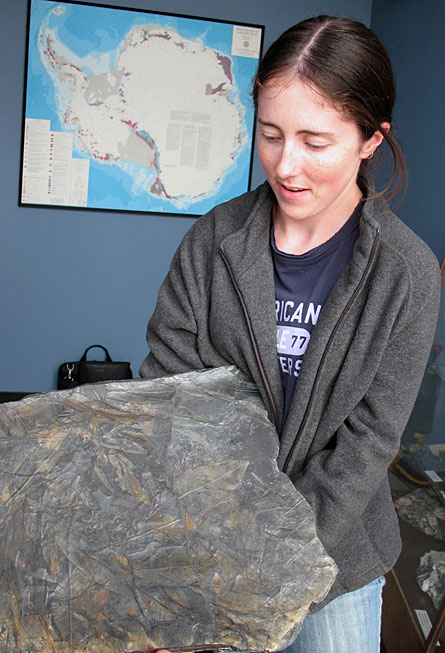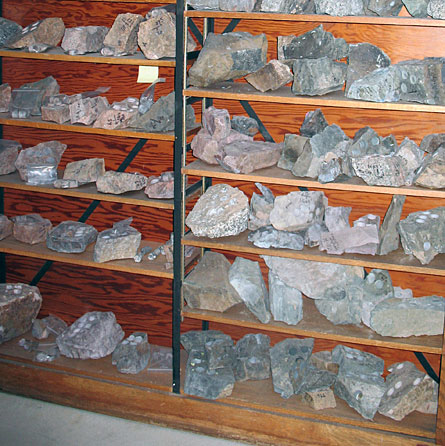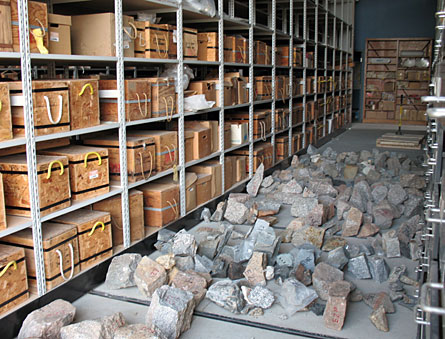One Rockin’ Library
Need a granite fix? Want to get your hands on some schist? Perhaps you’re dying to check out way-cool geodes or fossils? If so, the National Science Foundation has a library for you. The agency’s Polar Rock Repository is, just like it sounds, a lending library for rocks. The catch: So far they’re all from one continent — Antarctica.




This afternoon, I met with geologist Julie Codispoti, the achivist and acting curator of this 4,200 square foot facility on the Ohio State University campus. Fifteen minutes earlier she’d catalogued acquisition 16,044. And there are countless more stony donations awaiting serial numbers.
Look around this whisper-quiet library and you’ll find a rock jock’s idea of heaven. A few mini-boulders stand at attention under tables. Crates of unsorted stones sit in the back aisle. And strewn on the floor between two long rows of shelves bearing boxes is a huge spread of bigger-than-a-breadbox-size rocks. (Julie claims that each has been laid out in some precise order).
Plenty of geologists travel to the ends of the Earth in search of their quarry. The idea for this library, founded in 2003, is that retrieving this bounty is costly to scientists and hard on the fragile, polar environment. So NSF reasoned that once researchers finish analyzing their specimens they should box up the lot for recycling. Just phone Julie and she’ll arrange — at the library’s expense — for pickup of the rocks along with copies of research notes describing the collection (including precisely where its contents were initially picked up).
These materials are then available for other individuals to study — at the library, on photos posted to the Internet, or in person. That’s right, Julie will loan rocks out to scientists at no cost (even for shipping). Despite this deal, business has proven far from brisk. In the 18 months that she’s worked at the facility, perhaps 15 research teams have availed themselves of the privilege.
But that doesn’t mean the library’s holdings haven’t proven a valuable educational resource. Scientists at Ohio State’s Byrd Polar Research Center, next door, now and then borrow a box of rocks for show-and-tells at area schools. Even amateur geologists can stop by the unusual Columbus library. By year end, an estimated 1,300 are expected to have toured it. You can too. Just be prepared for dust. Lots and lots of dust.






